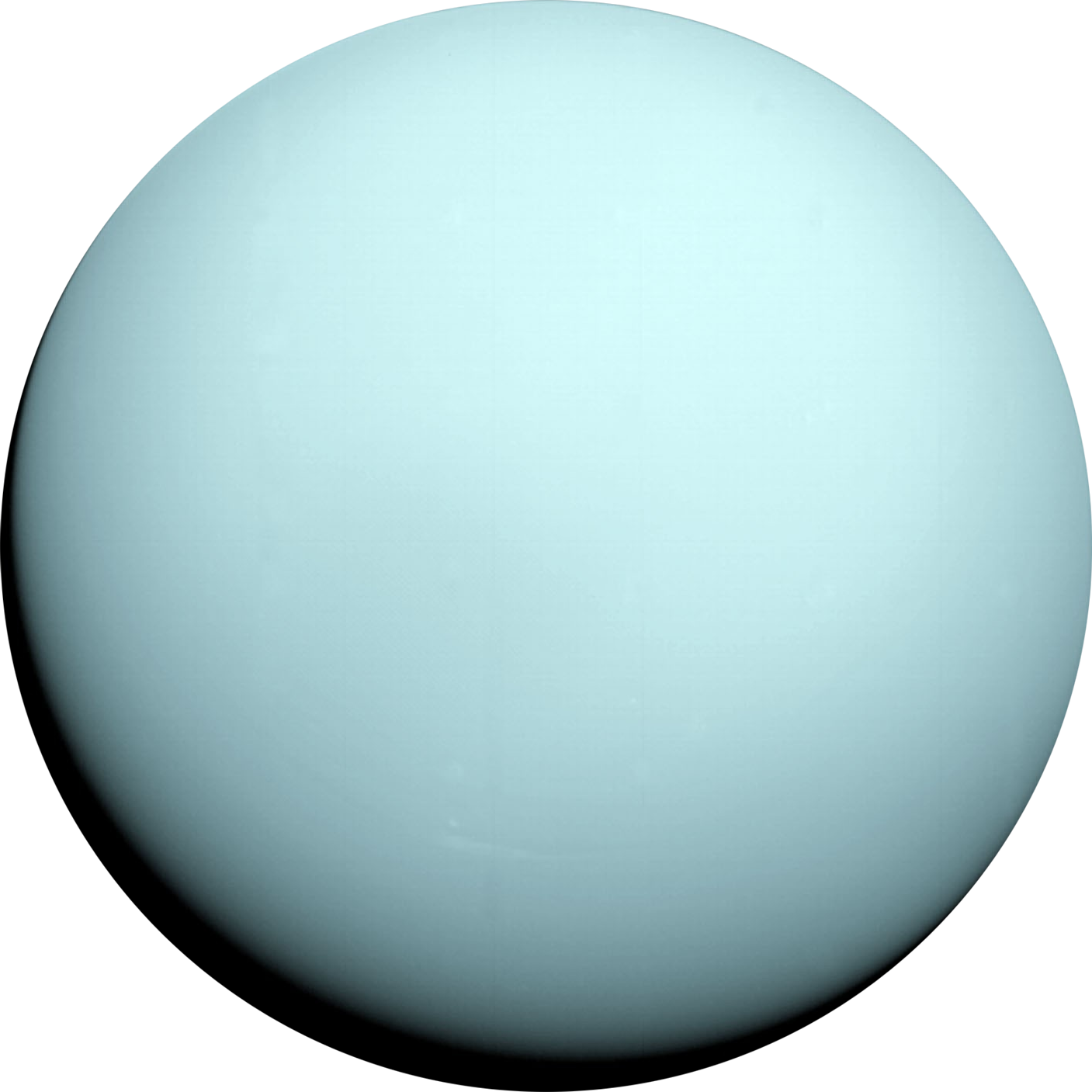Uranus
Uranus, the seventh planet from the Sun, is a fascinating and enigmatic celestial body in our solar system. Named after the Greek god of the sky, Uranus stands out for its unique characteristics. It is classified as an ice giant, consisting mainly of hydrogen and helium, with traces of methane that give it its distinctive blue-green color.


Introduction to Uranus
Uranus, the seventh planet from the Sun, is a fascinating and enigmatic celestial body in our solar system. Named after the Greek god of the sky, Uranus stands out for its unique characteristics. It is classified as an ice giant, consisting mainly of hydrogen and helium, with traces of methane that give it its distinctive blue-green color. With a diameter of about four times that of Earth, Uranus is the third-largest planet in our solar system. However, what truly sets Uranus apart is its peculiar axial tilt, as it rotates almost on its side. This axial tilt results in extreme seasons that last for decades, making Uranus an intriguing subject of scientific study. Its atmosphere is known for its dynamic cloud patterns and strong winds, while its rings and moons add to the planet's allure. Though exploration of Uranus has been limited compared to other planets, ongoing research and potential future missions hold the promise of unveiling more of its secrets and enhancing our understanding of the complex dynamics and mysteries of this distant and fascinating world.

Discovery and Naming of Uranus
The discovery and naming of Uranus mark a significant milestone in the history of astronomy. Uranus was first observed by the British astronomer William Herschel on the night of March 13, 1781. While scanning the night sky with his homemade telescope, Herschel noticed an object that appeared as a faint star. However, further observations revealed that this object exhibited a different motion compared to the fixed stars, suggesting it was not a star at all. Herschel initially believed he had discovered a new comet, but as the object's path and characteristics were studied, it became evident that this was a previously unknown planet. The official announcement of the discovery of Uranus was made on April 26, 1781, by the Royal Society, and Herschel named the planet "Georgium Sidus" after King George III of England. However, this name was not widely accepted outside of Britain.

Scientific Discoveries and Current Understanding
Scientific discoveries and our current understanding of Uranus have been shaped by various observations and missions that have shed light on this distant and intriguing planet. Uranus has been found to have a predominantly hydrogen and helium atmosphere, similar to other gas giants in our solar system, but with higher concentrations of volatile ices such as water, ammonia, and methane. The presence of methane in Uranus's atmosphere gives it a unique bluish-green color. One of the most puzzling aspects of Uranus is its extreme axial tilt, with its rotational axis almost parallel to its orbital plane. This results in Uranus appearing to roll on its side as it orbits the Sun. The exact cause of this extreme tilt remains a subject of scientific investigation, with hypotheses including collision events with other celestial bodies during its formation or gravitational interactions with other planets.